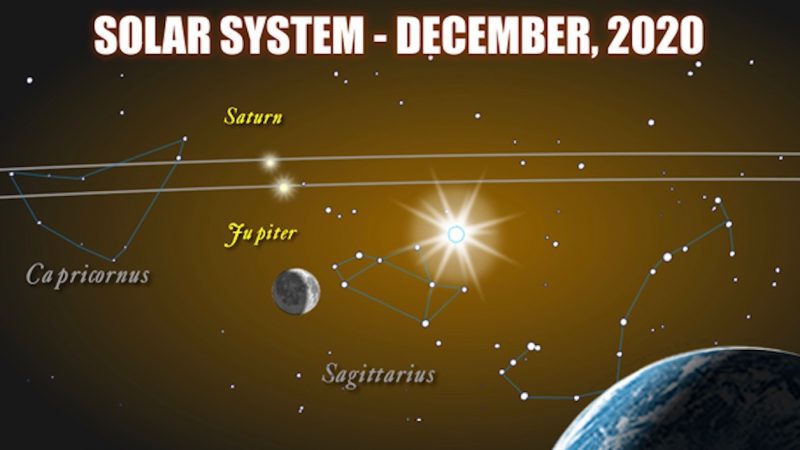With Thanks to Frank Parkinson
The Great Conjunction
“Look at the stars! look, look up at the skies! O Look at all the fire-folk sitting in the air!”
Many people, not just amateur astronomers, will have been aware of two bright objects in the sky over recent months.
The planet Venus has been brilliant in the eastern sky before sunrise, while the planet Jupiter is bright in the south-west evening sky.
Many may also be aware of another planet, Saturn, less bright than, but quite close to, Jupiter in the evening sky.

During December you can see a remarkable event which illustrates clearly the original Greek meaning of the word “planet” – wanderer!
Saturn and Jupiter are moving closer together as seen from the Earth, and in the evening sky of December 21st will appear to be almost touching each other. This is an event known as a Great Conjunction, and they will be much closer together than the size of a full moon.
Although conjunctions happen every 12 years or so, a Great Conjunction occurs much less frequently – the last remarkable one was in 1623.
To see this year’s Great Conjunction you should look low in the south-west sky just after sunset on December 21st. Jupiter is so bright that it is easy to spot, and Saturn being so close will make the pair unmistakable.
Don’t leave it too late, the planets are low in the sky and will disappear below the horizon within two hours or so after sunset. This means of course that you need to find a viewing place with a relatively clear view to the south-west.
As with all things astronomical, the weather can ruin our plans! But the planets motion in the sky appears to be quite slow, so you can see the close approach for many days before and after the 21st. Looking for the conjunction may also remind you of the magnificent sky whose beauty we ignore every single night.
And for those wondering about the Christmas star – that is another question!
